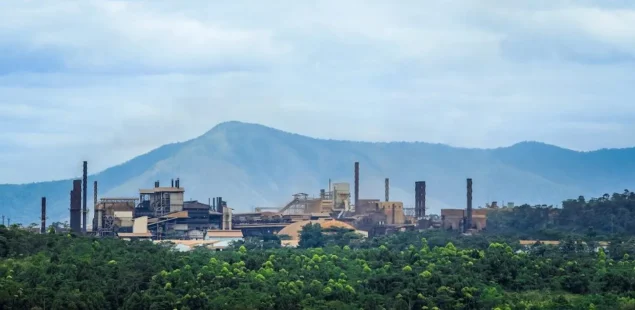
Nigeria has unveiled plans to construct what officials describe as Africa’s largest rare earth processing facility alongside four lithium processing plants, representing over $1.4 billion in announced investments as the West African nation attempts to transform its artisanal mining sector into industrial-scale operations. The initiative includes a $600 million lithium plant spanning Kaduna and Niger states, a $200 million facility near Abuja, and another $600 million plant in Nasarawa State, which will also host the continental rare earth processing complex amid global lithium prices trading near $10,000 per tonne and rare earth elements commanding approximately $60,000 per tonne.
Market Conditions Support Processing Economics
Global lithium demand reached 1.5 million tonnes in 2025 with annual growth rates of 15%, driven by electric vehicle adoption and energy storage deployment, while rare earth demand totals approximately 200,000 tonnes annually with 7% growth rates. These market fundamentals provide economic justification for processing investments, though Nigeria’s limited industrial mining capacity creates feedstock supply challenges that could undermine facility utilization rates.
Current lithium carbonate prices have declined from 2022 peaks above $80,000 per tonne but remain at levels that support new processing operations with adequate scale and efficiency. Rare earth elements maintain premium pricing due to supply concentration in China and growing demand from renewable energy and defense applications, creating opportunities for alternative suppliers with processing capabilities.
Ambitious Processing Targets Face Supply Reality
Nigeria’s federal policy mandates processing at least 30% of minerals locally before export, with industrial minerals requiring 35% local processing by 2030 according to the Raw Materials Research and Development Council roadmap supported by the African Development Bank. However, the planned rare earth facility’s 18,000-tonne annual processing capacity exceeds the US Geological Survey’s estimate of Nigeria’s total 2024 rare earth production at 13,000 tonnes, raising questions about feedstock sources and supply chain viability.
Nigeria’s estimated lithium reserves of 50,000 tonnes across Kaduna, Niger, Nasarawa, and Abuja regions could theoretically support processing operations, though current production remains minimal due to the dominance of artisanal mining operations. The disconnect between processing ambitions and current production levels highlights fundamental challenges facing Nigeria’s mining transformation.
Investment Scale Matches Regional Competition
The announced investment figures position Nigeria alongside regional competitors in critical minerals development, with Zimbabwe having attracted over $1.4 billion in Chinese lithium sector investments between 2020 and 2025 as Africa’s top lithium producer. Nigeria’s approach differs by emphasizing domestic processing rather than raw material exports, though execution challenges may limit the strategy’s effectiveness compared to Zimbabwe’s established mining operations.
Regional competition includes South Africa’s established rare earth processing capabilities and Namibia’s emerging lithium sector, creating pressure for Nigeria to demonstrate commercial viability quickly. Chinese investors have dominated African critical minerals investments, providing both capital and technical expertise that Nigeria may require for successful project implementation.
Informal Mining Sector Complicates Transition
Nigeria’s mining sector remains dominated by artisanal operations that operate outside formal regulatory frameworks, creating challenges for scaling up to industrial production levels required to support planned processing facilities. The regulatory framework faces enforcement challenges and limited capacity for formalizing small-scale operations, while infrastructure gaps in transport and energy systems constrain mining development in remote regions.
The transition from informal to formal mining requires substantial infrastructure investment, regulatory enforcement, and community engagement that could take years to implement effectively. Poor transport and energy infrastructure in mining regions creates additional barriers to industrial-scale development, while weak regulatory enforcement limits the government’s ability to coordinate sector transformation.
Economic Targets Appear Optimistic
Nigeria aims to increase mining’s contribution to gross domestic product from under 1% to 10% by 2026, representing a ten-fold increase within two years that appears ambitious given current sector conditions. The target assumes rapid scaling of both mining production and processing capacity while addressing regulatory, infrastructure, and supply chain challenges that have historically constrained sector development.
The government’s emphasis on value-added processing aligns with broader African initiatives to capture more economic value from mineral resources, though success depends on effective execution of complex industrial development programs. Investment risks include unclear project sponsors and financing sources, creating uncertainty about commercial viability and operational timelines.
Supply Chain Questions Remain Unresolved
The identities of companies backing the announced projects remain undisclosed, creating uncertainty about technical capabilities, financing arrangements, and operational timelines. Processing plants face feedstock supply challenges due to limited industrial mining, while the lack of transparency regarding project sponsors and supply chain arrangements raises questions about commercial viability.
Building high-capacity processing plants without corresponding industrial mining development could result in underutilized facilities or dependence on imported raw materials that would undermine the policy objective of domestic value addition. The gap between processing capacity and current production levels suggests potential misalignment between infrastructure development and resource availability.
Regional Context Shapes Development Strategy
African critical minerals development has attracted substantial international investment, particularly from Chinese companies seeking to secure supply chains for battery manufacturing and renewable energy applications. Nigeria’s strategy emphasizes domestic processing to capture greater economic value, though this approach requires more complex industrial development compared to raw material export models.
Government policy support for local processing includes investment incentives and export restrictions on unprocessed materials, creating both opportunities and challenges for international investors. The emerging investment climate benefits from recent government initiatives to attract foreign investment, though political risk and regulatory uncertainty remain concerns for long-term project development.
Company Background and Market Context
Nigeria’s mining sector includes substantial untapped potential in lithium, rare earth elements, and tin resources recognized by international geological surveys, though commercial development has lagged behind regional competitors. The country’s mineral endowment includes deposits across multiple states, with artisanal mining providing limited formal production data and minimal industrial-scale operations.
The Raw Materials Research and Development Council operates as the federal agency responsible for minerals policy development and implementation, working with international partners including the African Development Bank to support sector transformation. The council’s roadmap emphasizes domestic processing and value addition as key strategies for economic development, though implementation faces significant technical and financial challenges.
Critical minerals processing requires substantial technical expertise, specialized equipment, and reliable supply chains that may prove challenging to establish in Nigeria’s current operating environment. Global demand growth for lithium and rare earth elements supports market opportunities for new suppliers, though competition from established producers and technical barriers to entry create risks for new entrants in processing markets.



